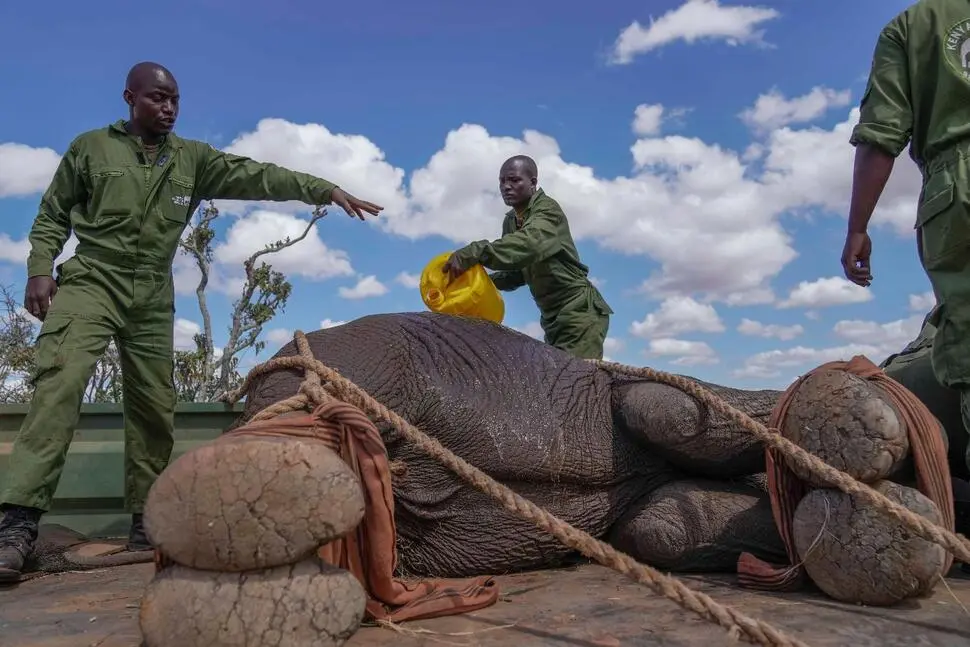MWEA, Kenya (AP) — Hovering low, a helicopter steadies itself as a skilled veterinarian takes careful aim. Moments later, a tranquilizer dart whistles through the air, and soon, a massive elephant surrenders to sleep. Wildlife experts rush in, monitoring vitals and ensuring the animal’s well-being.
Kenya is facing a unique challenge: the elephant population in the 42-square-kilometer (16-square-mile) Mwea National Reserve has more than tripled its capacity, growing from a sustainable 50 to 156 elephants. While this population boom showcases the success of conservation efforts, it has overwhelmed the local ecosystem. As a result, around 100 elephants need to be relocated to relieve pressure on the reserve. Back in 1979, the reserve hosted just 49 elephants.
“This shows poaching has been low, allowing the elephants to thrive,” said Erustus Kanga, Director General of the Kenya Wildlife Service, celebrating the conservation milestone of the past three decades.
Last week, experts began relocating 50 elephants to the expansive Aberdare National Park, a 780-square-kilometer (301-square-mile) haven in central Kenya. As of Monday, 44 elephants had successfully made the journey from Mwea to Aberdare, with six more scheduled to be moved on Tuesday.
Tourism Minister Rebecca Miano, who oversaw Monday’s relocation of five elephants, called the operation historic: “This is a record-breaking event, the largest relocation of elephants in Kenya’s history, with 50 elephants moved in one go.”
The operation, which begins at dawn, involves over 100 wildlife specialists and a fleet of vehicles, including specially equipped trucks and aircraft. A fixed-wing plane provides aerial surveillance to locate the elephant herds, which typically consist of small family units of about five. Helicopters then assist in herding and separating the elephants to ensure families remain intact during relocation.
A spotter aboard one of the helicopters identifies the elephants, while a veterinarian sedates them with tranquilizer darts. Once an elephant is tranquilized, a ground team works swiftly to clear the area for transport. Veterinary specialists monitor the elephant’s vitals, while another group of rangers lifts the animal—often weighing several tons—onto custom-built trucks. The trucks then transport the elephants 120 kilometers (74 miles) to their new home in Aberdare.
Kanga emphasized that the relocation also addresses rising human-wildlife conflicts. “The elephants were increasingly straying into nearby farms due to food shortages in the reserve,” said local resident Boniface Mbau. “We’re glad the government is reducing their numbers.”
A second phase to relocate an additional 50 elephants is planned, although the date has not yet been announced. The relocation effort has cost around 12 million Kenyan shillings ($93,000), according to the Kenya Wildlife Service.
Kenya’s national parks and reserves, home to a diverse array of wildlife, are a major draw for millions of tourists each year, solidifying the country’s status as a top global destination.
